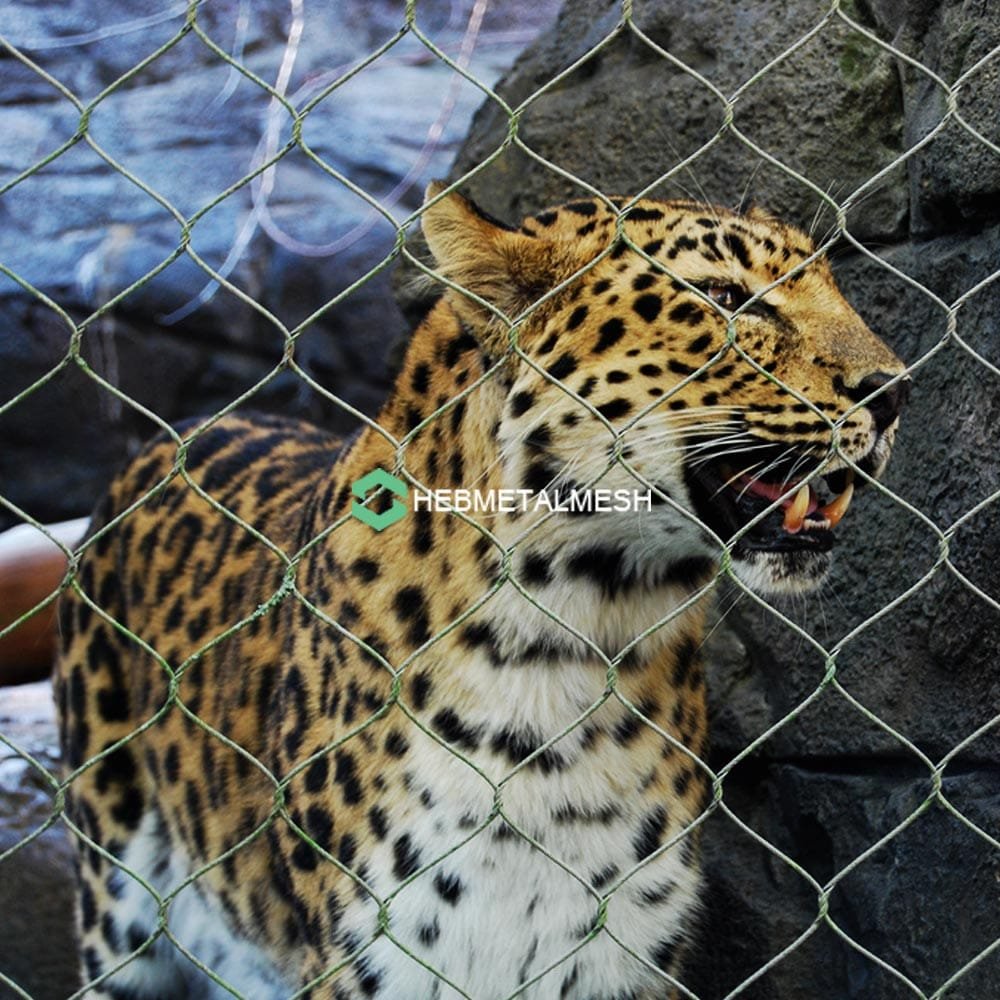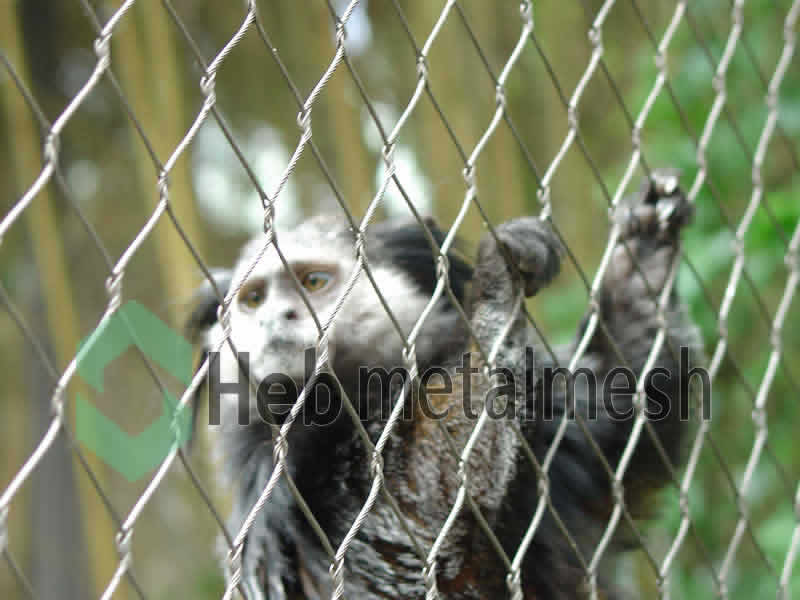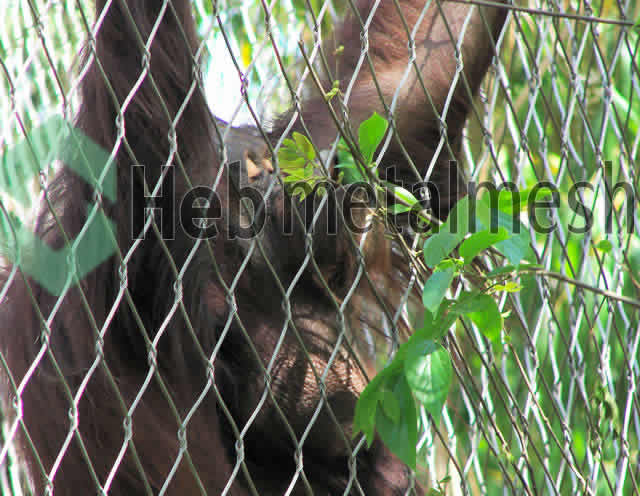Introduction to Stainless Steel Fences
Effective fencing solutions are essential for managing and protecting animals in various settings, ranging from farms and ranches to residential backyards. Fences play a crucial role in ensuring the safety of animals while preventing them from straying into hazardous areas. This need for effective enclosures has prompted the exploration of modern materials that offer superior performance and longevity. Among these materials, stainless steel has emerged as a popular choice for building fences for animals.
Stainless steel fences provide a robust and reliable alternative to traditional wooden or chain-link enclosures. Unlike wood, which may rot or decay over time due to exposure to moisture, stainless steel offers exceptional durability and resistance to environmental conditions. This longevity ensures that animal owners can invest in a fencing solution that will not only stand the test of time but also minimize maintenance costs. Furthermore, stainless steel does not rust, making it an ideal option for various climates, ensuring the enclosure remains secure and attractive for years.
In addition to their durability, stainless steel fences also provide enhanced safety features. The smooth edges and strong construction create a secure barrier that prevents animals from escaping or getting injured. This is particularly important for livestock and pets, where safety is a primary concern. Moreover, stainless steel’s structural integrity allows for taller and more effective fencing designs that can deter large or energetic animals, such as horses and dogs.
Overall, the introduction of stainless steel as a fencing material highlights the advancement of design and technology in animal management practices. As we delve further into this guide, we will explore the various benefits of stainless steel fences for animals, comparing them to traditional materials while considering aspects of design, safety, and overall functionality.
What Makes Stainless Steel Ideal for Animal Fencing
Stainless steel has emerged as a superior material for animal fencing due to its remarkable properties, especially when compared to traditional fencing materials. Key characteristics such as corrosion resistance, exceptional strength, and longevity make stainless steel an optimal choice for constructing fences for animals. These features are particularly important for outdoor applications, where exposure to various environmental elements can lead to material degradation.
One of the primary advantages of stainless steel, especially grades 304 and 316, is their inherent corrosion resistance. This quality is critical in agricultural and rural settings where moisture, chemicals, and animal waste can rapidly degrade other materials. Stainless steel 304 contains a minimum of 18% chromium and 8% nickel, providing a solid balance of strength and corrosion resistance, making it suitable for many fencing applications. Conversely, stainless steel 316 is enhanced with molybdenum, which offers superior protection against chloride environments. This makes 316 a preferred choice for coastal regions or other areas with high saline exposure.
Beyond corrosion resistance, the strength of stainless steel allows for the construction of sturdy and secure fences for animals. Given its high tensile strength, stainless steel can withstand significant forces, ensuring that the fencing maintains its integrity over time. This property is particularly crucial when containing larger or more energetic animals, as weaker materials might bend or break under pressure. Furthermore, the longevity of stainless steel contributes to its cost-effectiveness, reducing the need for frequent replacement or repairs compared to alternative materials.
In summary, the combination of corrosion resistance, strength, and durability in stainless steel—especially grades 304 and 316—makes it an ideal choice for animal fencing. Its performance in various environmental conditions ensures that it remains a reliable solution for farmers and animal owners looking to create secure, long-lasting enclosures for their animals.
Features of Our Stainless Steel Fences
Our stainless steel fences for animals are meticulously designed to ensure robust durability while providing a safe enclosure for livestock. One of the standout features of these fences is the stainless steel wire rope mesh, which is specifically engineered to balance functionality and aesthetics. This mesh design not only offers high strength and resilience but also enhances visibility, allowing unobstructed views of the enclosed area. The transparency of the mesh ensures that both animals and their caretakers can maintain a clear line of sight, fostering a safe and interactive environment.
Animal safety is paramount in the designs of our stainless steel fences. The tightly woven wire rope mesh provides several advantages; it is resistant to corrosion, which extends the life of the fence while minimizing maintenance needs. Furthermore, the absence of sharp edges ensures that animals are protected from potential injuries while housed within the enclosure. Critically, this mesh is flexible yet extremely sturdy, adapting to the natural movements of animals without compromising the integrity of the fence. Animals are less likely to escape due to the tightly knit structure, providing peace of mind to caretakers.
In addition to safety, practicality is another main advantage of our stainless steel fences. These systems are lightweight, making installation and repositioning efficient. They can easily be set up in diverse terrains, accommodating various livestock needs. The aesthetic appeal of stainless steel also allows it to blend seamlessly into the landscape, which can be especially important in agricultural settings. Overall, the combination of animal safety features, practicality, and visual appeal positions our stainless steel fences as an ideal choice for anyone needing reliable barriers for farm animals or livestock.
Benefits of Using Our Stainless Steel Wire Rope Mesh Fences for Animals
When it comes to fencing for animals, our stainless steel wire rope mesh fences offer several distinct advantages that make them a superior choice. One of the primary benefits is increased visibility. The open design of wire rope mesh ensures that visibility is maximized, allowing owners to monitor their animals effectively. This feature is particularly beneficial for larger properties where animal safety can be challenging. Owners can easily spot their animals, allowing for quick intervention in case of any issues.
Another notable advantage is the reduced maintenance required with stainless steel wire rope mesh fences. Unlike traditional wood or vinyl fences that may require regular painting, sealing, or replacement due to wear and weathering, stainless steel is inherently resistant to corrosion and rust. This durability significantly decreases the need for ongoing maintenance, allowing animal owners to focus more on their animals rather than their fencing. Furthermore, a simple wash with water and mild detergent is usually enough to keep the fence looking clean and professional over time.
In addition to reduced maintenance, enhanced durability stands out as a critical benefit of our wire rope mesh fencing. Built from high-quality stainless steel, these fences withstand harsh weather conditions and resist physical damage from animals. Whether it is chewing, scratching, or impact, the robust design ensures that the integrity of the fencing remains intact, providing a safe environment for the animals. This durability not only protects the animals but also represents a long-term investment for property owners, saving them from costly repairs or replacements.
In light of these benefits, our stainless steel wire rope mesh fences for animals emerge as an ideal fencing solution. Their combination of visibility, low maintenance, and outstanding durability makes them a cost-effective and reliable choice for any animal enclosure.
Understanding Roll Sizes: 30′ x 60′ Explained
The 30′ x 60′ roll size has become a standard in the world of fencing for animals, and its significance in fencing projects cannot be understated. This large roll offers several advantages that can streamline the process of installation while providing flexibility for various applications. For those considering the installation of fences for animals, this roll size simplifies how materials can be managed on-site.
One of the primary benefits of using a 30′ x 60′ roll is the ease of installation it provides. Having a larger roll means fewer seams and less cutting, which can save both time and labor costs during the installation process. This is particularly beneficial for large properties or for those who require extensive fencing to confine specific types of animals. By reducing the number of joints, the likelihood of weak points in the fence is minimized, ensuring a more robust barrier.
Additionally, the 30′ x 60′ roll size contributes to cost efficiency. Fences for animals are often a significant investment, and utilizing larger rolls can lead to substantial savings on materials and labor. Fewer rolls mean reduced shipping costs and savings on bulk purchases, making it a financially sound choice for property owners and farm managers alike.
Lastly, this versatile roll size accommodates various types of fencing applications. Whether you are fencing for livestock, pets, or to establish boundaries within a property, the 30′ x 60′ size provides ample material to create secure enclosures. Its adaptability is crucial, as different types of animals may require varying levels of fencing specifications to ensure safety and containment.
Installation Guide for Stainless Steel Animal Fences
Installing stainless steel fences for animals is a task that, when executed correctly, provides a long-lasting and secure enclosure for livestock or pets. This guide will walk you through the essential steps and the tools you will need to ensure a successful installation.
Begin by assessing the area where the fence will be installed. It is vital to measure the perimeter accurately and identify any obstructions such as trees or rocks that could interfere with the fence line. Once you have established the boundaries, mark the corners with stakes and use a string line to outline the fence path. This ensures that your fencing layout is straight and precise.
The next step is to gather the necessary materials and tools. For a stainless steel fence, you will require stainless steel panels or mesh, posts (preferably made of rust-resistant materials), and appropriate fasteners. You will also need tools such as a post hole digger, level, hammer, and a measuring tape. Be sure to wear safety gear throughout the installation process.
With materials ready, begin installing the fence posts. Dig holes that are at least two feet deep to ensure stability, especially in areas prone to harsh weather conditions. Position the posts at intervals of 8-10 feet, depending on the type of fence you have chosen. After placing the posts, use a level to ensure they are straight and secure them with concrete for added strength.
Once the posts are set, attach the stainless steel panels or mesh, ensuring that each section is properly aligned. Use the fasteners to secure the panels to the posts, spacing them evenly. Finally, inspect the entire fence for any gaps or loose sections, as these could compromise the safety of your animals.
Completing these steps will result in a durable and effective enclosure for animals, capable of withstanding the test of time and various environmental challenges.
Safety Considerations When Using Stainless Steel Fences for Animals
When it comes to utilizing stainless steel fences for animals, prioritizing safety is of paramount importance. A well-designed fence not only serves as a physical barrier but also plays a crucial role in ensuring the well-being of the animals it contains. One of the primary considerations is the spacing between fence pickets. It is essential to set this spacing appropriately based on the size and type of animals being contained. For instance, smaller animals may require closer spacing to prevent them from squeezing through or escaping, while larger animals might need wider spacing to remain comfortable.
Height is another critical factor to consider when determining the safety of stainless steel fences for animals. The required fence height can vary according to the species and behavior of the animals. For instance, livestock such as cows or horses typically require taller fencing than smaller pets. In general, a height of at least four to six feet is recommended for preventing jumps, particularly for agile species like goats or some breeds of dogs. Combining adequate height with a design that minimizes the potential for climbing can significantly enhance security.
Additional features can further bolster the effectiveness of stainless steel fences for animals. Installing a top rail or overhang can deter animals from attempting to climb. Meanwhile, incorporating a buried fence or adding a secure gating system allows for better containment. Regular maintenance checks are also vital; ensuring that there are no loose ends or rust can contribute to ongoing safety. By thoughtfully considering spacing, height requirements, and extra features when installing stainless steel fences for animals, owners can create a secure environment that meets the needs of their specific animal population.
Comparing Stainless Steel Fences to Other Fencing Options
When it comes to choosing suitable fences for animals, various materials are available, each with its own set of advantages and disadvantages. Among these, stainless steel stands out as a prominent option, particularly when compared to traditional materials like wood, vinyl, and chain link.
Wooden fences, while aesthetically pleasing, are prone to issues such as rotting, warping, and pest damage over time. These factors can compromise their structural integrity, necessitating regular maintenance and replacement. For animal owners, this translates to increased costs and effort, which may not be practical. Conversely, stainless steel fences for animals provide exceptional durability, resisting decay and weather-related deterioration, ultimately offering a longer-lasting solution.
Vinyl fencing presents another alternative, known for its low maintenance requirements and attractive appearance. However, it can be less durable than stainless steel, particularly in environments subject to extreme temperatures or animal interactions. Vinyl material can crack or become brittle over time, whereas stainless steel maintains its strength and functionality regardless of environmental factors.
Chain link fences are a popular choice due to their affordability and ease of installation. However, when it comes to the protection of animals, chain link lacks the robustness offered by stainless steel. Chain link can be easily climbed or pushed through by determined animals, increasing the risk of escape. In contrast, stainless steel provides a secure barrier, ensuring that animals are kept safe and contained.
Moreover, stainless steel possess aesthetic versatility, allowing it to blend seamlessly with various landscapes while still providing the necessary safety. In summary, when evaluating different fencing options for animals, stainless steel emerges as a superior choice due to its strength, durability, and design flexibility, making it a favored material in animal enclosures.
Conclusion: Invest in Stainless Steel Fences for Your Animals
In evaluating fencing options for animal enclosures, the advantages of stainless steel fences become increasingly apparent. Their unmatched durability is a crucial factor, as they are resistant to rust, rot, and other weather-related wear and tear, ensuring longevity that surpasses traditional fencing materials. This not only minimizes replacement costs over time but also contributes to a consistently safe environment for animals.
Moreover, safety is paramount when considering barriers for livestock or pets. Stainless steel fences provide a robust structure that effectively contains animals, deterring escape and protecting them from external threats. The smooth surface of stainless steel reduces the risk of injury, which is a significant concern with other types of fences that may have sharp edges or splinters. Coupled with thoughtful design options, stainless steel fencing can be tailored to meet specific needs, ensuring both functionality and aesthetic appeal in your property.
Another noteworthy benefit of stainless steel is its environmental resilience. This material is not only recyclable but also exhibits minimal environmental impact throughout its lifecycle. As a responsible choice for animal owners, investing in stainless steel fences aligns with sustainable practices aimed at preserving our planet for future generations.
In light of these many advantages, it is clear that stainless steel fences for animals offer a combination of permanence, safety, and environmental consciousness. We encourage readers to consider integrating stainless steel fencing into their animal enclosures. By making this essential investment, you will ensure a secure and sustainable environment for your beloved animals, thereby enhancing their well-being and your peace of mind.


